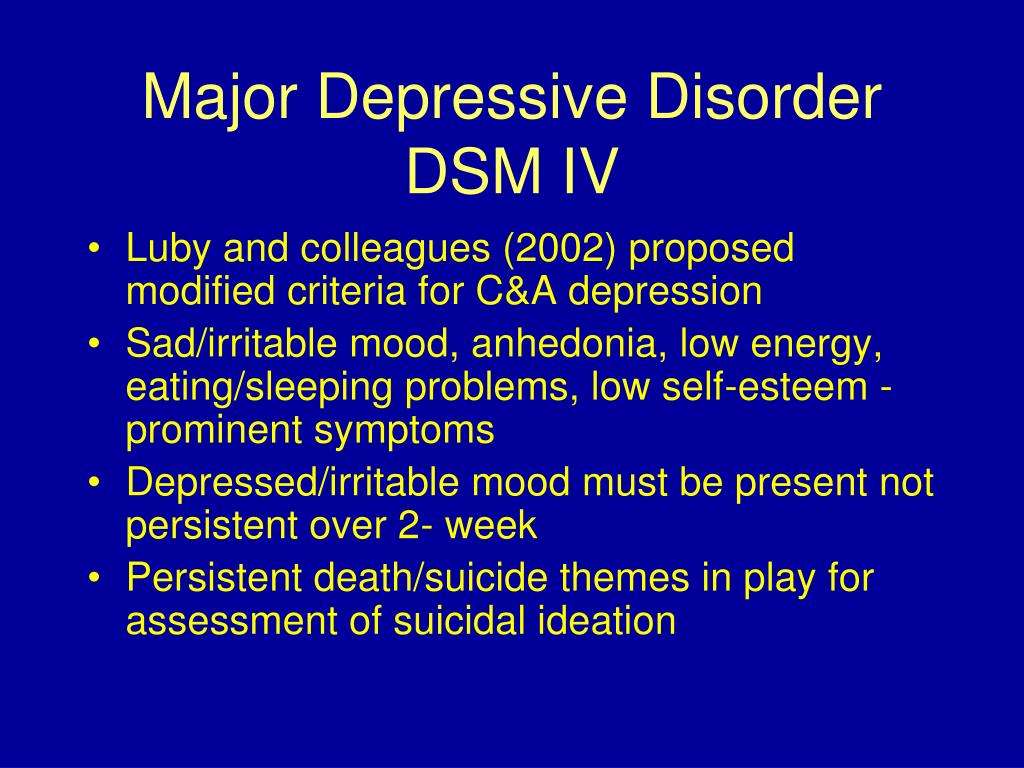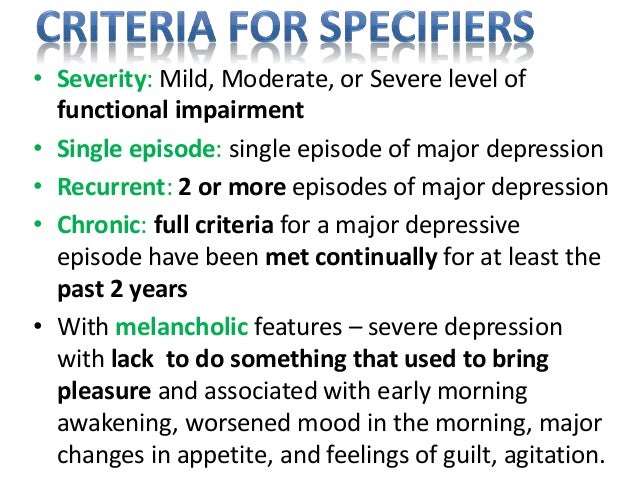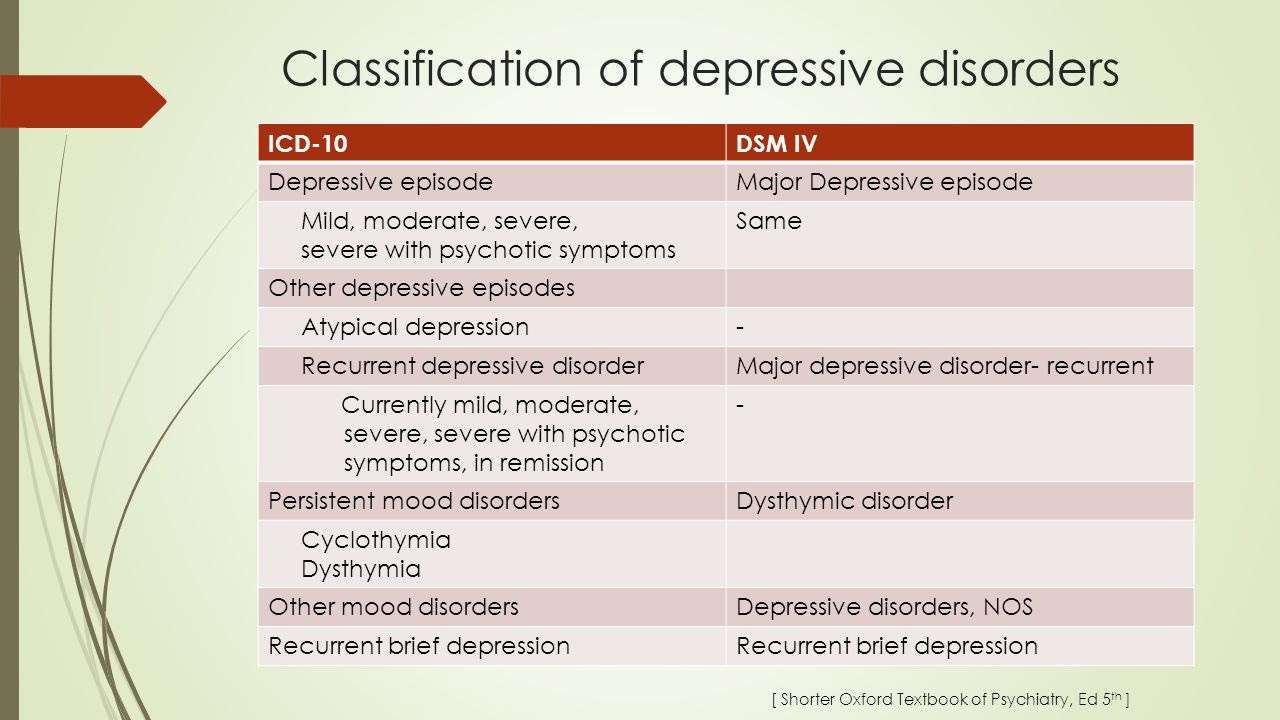Life Expectancy And The Risk Of Suicide
Depressed individuals have a shorter life expectancy than those without depression, in part because people who are depressed are at risk of dying of suicide. Up to 60% of people who die of suicide have a mood disorder such as major depression, and the risk is especially high if a person has a marked sense of hopelessness or has both depression and borderline personality disorder. About 2â8% of adults with major depression die by suicide, and about 50% of people who die by suicide had depression or another mood disorder. The lifetime risk of suicide associated with a diagnosis of major depression in the US is estimated at 3.4%, which averages two highly disparate figures of almost 7% for men and 1% for women . The estimate is substantially lower than a previously accepted figure of 15%, which had been derived from older studies of people who were hospitalized.
Depressed people have a higher rate of dying from other causes. There is a 1.5- to 2-fold increased risk of cardiovascular disease, independent of other known risk factors, and is itself linked directly or indirectly to risk factors such as smoking and obesity. People with major depression are less likely to follow medical recommendations for treating and preventing cardiovascular disorders, further increasing their risk of medical complications.Cardiologists may not recognize underlying depression that complicates a cardiovascular problem under their care.
How Is Depression Different From Sadness
What is the difference between depression and sadness? Given that the primary symptom associated with depression is sadness it can be hard to know how to make a distinction between the two psychological states.
But depression is more than just sadness, and not simply by a measure of degree. The difference doesnât lie in the extent to which a person feels down, but rather in a combination of factors relating to the duration of these negative feelings, other symptoms, bodily impact, and the effect upon the individualâs ability to function in daily life.
Sadness is a normal emotion that everyone will experience at some point in his or her life. Be it the loss of a job, the end of a relationship, or the death of a loved one, sadness is usually caused by a specific situation, person, or event. When it comes to depression, however, no such trigger is needed. A person suffering from depression feels sad or hopeless about everything. This person may have every reason in the world to be happy and yet they lose the ability to experience joy or pleasure.
With sadness, you might feel down in the dumps for a day or two, but youâre still able to enjoy simple things like your favorite TV show, food, or spending time with friends. This isnât the case when someone is dealing with depression. Even activities that they once enjoyed are no longer interesting or pleasurable.
How Is Persistent Depressive Disorder Diagnosed
If you think you have PDD, talk to a healthcare provider. There are no tests for chronic depression, so the diagnosis comes from discussions with a provider. The provider might ask:
- Do you feel sad a lot?
- Are there particular reasons you feel down?
- Do you have trouble sleeping?
- Do you have trouble concentrating?
- Are you taking any medications?
- How long have you had these symptoms?
- Are the symptoms there all the time, or do they come and go?
Your healthcare provider may order blood or urine tests to rule out other causes. The healthcare provider also might refer you to a psychologist or psychiatrist to talk about your symptoms. These providers are specially trained to discuss mental health.
Also Check: Things To Know About Depression
Additional Dsm Major Depressive Disorder Criteria
In MDD, the DSM states either a depressed mood or anhedonia must be present. In addition to the above DSM criteria for a major depressive episode, the episode must:
- Be at least two weeks long
- Cause significant distress or severely impact social, occupational or other important life areas
- Not be precipitated by drug use
- Not meet the criteria for another mental disorder like schizophrenia or bipolar disorder
- Not be better explained by bereavement
Major depressive disorder can be rated mild, moderate or severe. The DSM also recognizes MDD may occur with psychotic symptoms. When the MDD continues for more than two years, the DSM labels it chronic depression or dysthymia.
Recurrence Of Early Depression

According to the AmericanAcademyofChildandAdolescentPsychiatry practice parameters for depressive disorders in childhood and adolescence, a history of a previous depressive episode, subsyndromal symptoms of depression, dysthymia, and anxiety disorders increase the risk for future depression. In a study of an epidemiologic sample of 776 adolescents by Pine and associates, symptoms of majordepressioninadolescencestrongly predicted episodes of major depression in adulthood.
Don’t Miss: Things To Do For Depression And Anxiety
Distinguishing Between Moderate And Severe Depression
While there is no clear consensus on how to rate the severity of depression, one study found that DSM-5 diagnostic criteria could be used to infer the severity of the condition.
Depressed mood along with the presence of somatic symptoms was an indicator of moderate depression.
People with moderate depression are more likely to experience primary symptoms of low mood, sleep difficulties, weight or appetite changes, and increased/slowed psychomotor activity.
Anhedonia along with non-somatic symptoms was an indicator of severe depression. Along with losing interest in things that used to be pleasurable, people with severe depression are more likely to experience symptoms such as feelings of worthlessness and thoughts of death.
What Causes Persistent Depressive Disorder
Scientists dont fully understand what causes PDD. But it might be related to low levels of serotonin. Serotonin is a natural hormone that controls our emotions and feelings of well-being. It also influences other body functions.
PDD may get triggered by a traumatic event in life. Examples include losing a job, having a loved one die, experiencing a crime or going through a breakup.
Also Check: Does Depression Always Have A Reason
Types Of Recurrent Depressive Disorder
There are two types of recurrent depressive disorder. The most common, recurrent major depression, involves episodes that meet the diagnostic criteria for major depressive disorder , followed by months or years of remission before the occurrence of the next episode.
The second type of recurrent depressive disorderwhich is listed in DSM-5is recurrent brief depression. Researchers have found that some individuals may experience short-term severe depressive episodes that last for 2 to 7 days.6 This type of recurrent depression frequently occurs together with major depressive disorder or persistent depressive disorder.
What You Can Do Now
To treat depression effectively, its important that you reach out to your doctor for a diagnosis. They will work with you to determine the right treatment measures. Treatment may include SSRIs, herbal remedies, CBT, or lifestyle adjustments.
Its especially important to contact your doctor in cases of mild to moderate depression, as the symptoms may not be noticeable to others. Though it may take time for treatment to make a noticeable difference, reaching out to your doctor is the first step toward feeling better.
If youre dealing with thoughts of suicide or acts of self-harm, call your local emergency services or a crisis hotline right away. You can try the National Suicide Prevention Lifeline at 800-273-8255.
Recommended Reading: Worksheets To Help With Depression
Disruptive Mood Dysregulation Disorder
Disruptive mood dysregulation disorder is a condition that occurs in children and youth ages 6 to 18. It involves a chronic and severe irritability resulting in severe and frequent temper outbursts. The temper outbursts can be verbal or can involve behavior such as physical aggression toward people or property. These outbursts are significantly out of proportion to the situation and are not consistent with the childs developmental age. They must occur frequently and typically in response to frustration. In between the outbursts, the childs mood is persistently irritable or angry most of the day, nearly every day. This mood is noticeable by others, such as parents, teachers, and peers.
In order for a diagnosis of disruptive mood dysregulation disorder to be made, symptoms must be present for at least one year in at least two settings and the condition must begin before age 10. Disruptive mood dysregulation disorder is much more common in males than females. It may occur along with other disorders, including major depressive, attention-deficit/hyperactivity, anxiety, and conduct disorders.
Disruptive mood dysregulation disorder can have a significant impact on the childs ability to function and a significant impact on the family. Chronic, severe irritability and temper outbursts can disrupt family life, make it difficult for the child/youth to make or keep friendships, and cause difficulties at school.
Treatment typically involves and/or medications.
Treatments For Recurrent Depressive Disorder
As with most other types of depression, the most common and effective treatment includes a combination of medication and psychotherapy while the individual is experiencing an active depressive episode. This treatment may last for months or at least until the symptoms become more manageable. Once the episode of recurrent depression is considered to be in remission, psychotherapy may be stopped, and the affected individual may remain on medication to prevent another occurrence.
Also Check: Things To Never Say To Someone With Anxiety And Depression
Primary Diagnosis: Major Depressive Disorder Single Episode
Primary diagnosis: Major Depressive Disorder, single episode, moderate with anxious distress
The Prominence Of Anxiety Symptoms And Syndromes

Surprisingly, anxiety is not considered as a core or associated symptom of depression according to either DSM-IV or ICD-10 criteria. Neither is with anxious features a specifier within DSM-IV, yet. up to 90% of patients have co-occurring anxiety symptoms, and approximately 50% of depressed patients meet, criteria for a comorbid anxiety disorder., This lack of syndrome independence on Axis 1 is a major limitation to the current concept, of comorbidity. Comorbid disorders should only exist, at a level expected by chance, yet. in the case of M’DD, comorbidity is the rule and not the exception..
A recent proposal for mood and anxiety spectrum disorders, to be considered in DSM-V, has been advanced by Watson who proposes three subclasses of emotional disorders: bipolar disorders,distress disorders, and fear disorders . This reflects a pendulum swing to the unitary position of Mapother and Lewis who viewed states of anxiety along a continuum with depressive disorders, in contrast. to the progressive separation of mood and anxiety disorders initiated more than three decades ago., It is likely that the inconsistent impact of some antidepressants on anxiety has distorted measurement of anxiety symptoms during treatment.
Don’t Miss: Dealing With People With Depression
What Does Severe Depression Feel Like
Severe depression is classified as having the symptoms of mild to moderate depression, but the symptoms are severe and noticeable, even to your loved ones.
Episodes of major depression last an average of six months or longer. Sometimes severe depression can go away after a while, but it can also be recurrent for some people.
Diagnosis is especially crucial in severe depression, and it may even be time-sensitive.
Major forms of depression may also cause:
- delusions
- hallucinations
- suicidal thoughts or behaviors
Severe depression requires medical treatment as soon as possible. Your doctor will likely recommend an SSRI and some form of talk therapy.
If youre experiencing suicidal thoughts or behaviors, you should seek immediate medical attention. Call your local emergency services or the National Suicide Prevention Lifeline at 800-273-8255 right away.
Who Is At Risk For Major Depression
Major depression affects about 6.7% of the U.S. population over age 18, according to the National Institute of Mental Health. Overall, between 20% and 25% of adults may suffer an episode of major depression at some point during their lifetime.
Major depression also affects older adults, teens, and children, but frequently goes undiagnosed and untreated in these populations.
Don’t Miss: Herbal Remedies For Depression During Menopause
Acute Phase Treatment: Mild To Moderate
The combination of antidepressant medication and psychotherapy may be the initial treatment approach for patients with moderate depression in the presence of psychosocial stressors, interpersonal difficulties, intra-psychic conflict, and personality disorders. Combination therapy may also be appropriate for patients with only partial remission on one type of treatment, or with a history of poor adherence to treatment. Most primary care physicians can medically manage these patients while referring them to a professional psychotherapist for co-management.
Assessing for Adequate Response in the Acute Phase
Overall, if after the initial 4 8 weeks there is not a moderate improvement in baseline symptoms in the acute phase, then a reassessment of the diagnosis, medication regimen and / or psychotherapy, adherence, substance or alcohol use is in order. Increasing the treatment dose is the first step to be considered. If 4 8 weeks after the increase of treatment dose there is not a moderate improvement in symptoms, another review should occur. Other treatment options should then be considered in consultation with a psychiatric specialist.
Access The Latest Research On Moderate Major Depressive Disorder
For psychiatrists and health professionals seeking the most up-to-date research on moderate major depressive disorder, Psychiatrist.com offers a rich collection of peer-reviewed articles and evidence-based information.
Psychiatrist.com is a leading source of scientifically rigorous research on a broad array of psychiatric topics, including major depression, or major depressive disorder . Within the archives of Psychiatrist.com, youll find articles, case reports, features, and analyses on moderate major depressive disorder as well as recurrent major depressive disorder, unipolar major depressive disorder, and other forms of MDD.
Through the CME Institute of Physicians Postgraduate Press, Inc., Psychiatrist.com also offers opportunities for clinicians to earn CME credits with a wide range of activities around moderate major depressive disorder, recurrent major depression, and other forms of depression as diagnosed with major depressive disorder DSM-5 criteria.
Register on Psychiatrist.com today for access to a broad range of articles, podcasts, blogs, and other resources. Or purchase a subscription for complete access to all current and archived research on moderate major depressive disorder and other subjects in the field of mental health.
Don’t Miss: Solutions For Anxiety And Depression
New Specifiers For Depression In Dsm
The latest edition of the Diagnostic and Statistical Manual of Mental Disorders , the DSM-5, added two specifiers to further classify diagnoses:
- With Mixed Features â This specifier allows for the presence of manic symptoms as part of the depression diagnosis in patients who do not meet the full criteria for a manic episode.
- With Anxious Distress â The presence of anxiety in patients may affect prognosis, treatment options, and the patientâs response to them. Clinicians will need to assess whether or not the individual experiencing depression also presents with anxious distress.
Drug Therapy For Depression
Several drug classes and drugs can be used to treat depression:
Choice of drug Drug Choice and Administration of Antidepressants Several drug classes and drugs can be used to treat depression: Selective serotonin reuptake inhibitors Serotonin modulators Serotonin-norepinephrine reuptake inhibitors… read more may be guided by past response to a specific antidepressant. Otherwise, SSRIs are often the initial drugs of choice. Although the different SSRIs are equally effective for typical cases, certain properties of the drugs make them more or less appropriate for certain patients .
Don’t Miss: I Have Been Depressed My Whole Life
How Is Major Depression Treated
Major or clinical depression is a serious but treatable illness. Depending on the severity of symptoms, your primary care doctor or a psychiatrist may recommend treatment with an antidepressant medication. They may also suggest psychotherapy, or talk therapy, in which you address your emotional state.
Sometimes, other medications are added to the antidepressant to boost its effectiveness. Certain medicines work better for some people. It may be necessary for your doctor to try different drugs at different doses to determine which medicine works best for you.
There are other treatment options for clinical depression — such as electroconvulsive therapy, also called ECT or shock therapy — that can be used if drugs prove ineffective or symptoms are severe.Ã Other treatments for depression that is difficult to treat include intranasal ketamine or transcranial magnetic stimulation
Core And Associated Symptoms Within The Diagnosis Of Major Depressive Disorder

The current polythetic approach to diagnostic classification of Major Depressive Disorder in the Diagnostic and Statistical Manual of Mental Disorders. 4th ed. is devoid of implications about etiopathology or treatment response. Only depressed mood or loss of interest or pleasure in nearly all activities are considered to be essential requirements for the diagnosis of a .Major Depressive Episode in DSM-IV. When these two core symptoms were used to screen for MDD using a 2-item version of the Patient Health Questionnaire , they displayed a sensitivity of 83% and a specificity of 92% for caseness based on a Structured Clinical Interview for DSM-IV and comparable results were obtained in a subsequent. .European replication.
Confirmatory diagnosis of an MDE, according to DSM-IV, requires a minimum of five symptoms for a minimum of 2 weeks . It is easy to see how the multiple permutations and combinations of these symptoms contribute to substantial intraclass heterogeneity.
Read Also: Coping Skills To Help With Depression
What Is The Icd 10 Code For Major Depressive Disorder
Major depressive disorder, single episode, moderate. F32.1 is a billable/specific ICD-10-CM code that can be used to indicate a diagnosis for reimbursement purposes. The 2018/2019 edition of ICD-10-CM F32.1 became effective on October 1, 2018. This is the American ICD-10-CM version of F32.1 other international versions of ICD-10 F32.1 may differ.